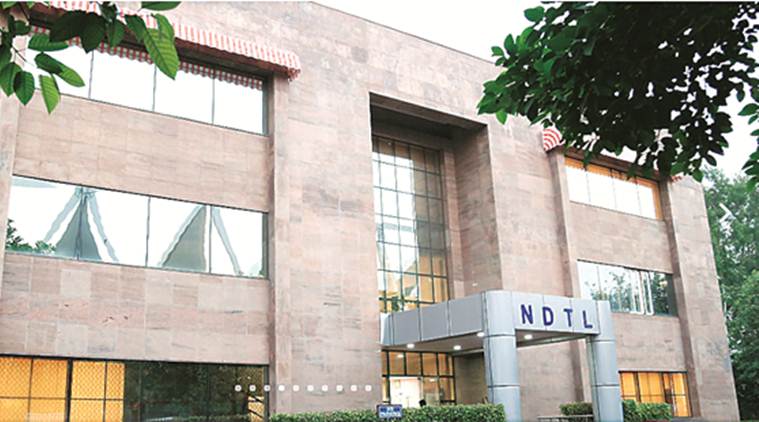 In February 2020, WADA started disciplinary proceedings against NDTL for not addressing their concerns. The outcome of it is the extension of the ban until at least January next year. (File Photo)
In February 2020, WADA started disciplinary proceedings against NDTL for not addressing their concerns. The outcome of it is the extension of the ban until at least January next year. (File Photo)
The World Anti-Doping Agency (WADA), late on Tuesday, extended the suspension of the National Dope Testing Laboratory (NDTL) by a further six months, a decision that could have considerable bearing on the country’s anti-doping programme as sport gradually resumes post-lockdown.
The Indian lab was first suspended in August 2019 for not conforming to international standards. One of the key points of contentions was in relation to the Isotope Ratio Mass Spectrometry (IRMS) analytical method, which helps in finding the chemical and biological origin of a substance in a given sample.
In February 2020, WADA had started disciplinary proceedings against the NDTL, which comes under the sports ministry, for not addressing their concerns. The outcome of it is the extension of the ban until at least January next year.
Huge costs
The suspension of the Delhi-based lab has an impact on the anti-doping programme in India, which has one of the highest dope offenders in the world.
In simple terms, this is how the anti-doping system functions: the National Anti Doping Agency (NADA), which is supposed to be an autonomous body funded by the government, collects urine and blood samples of the athletes, in-and-out-of-competition.
At national camps and domestic events of government-recognised federations, NADA, whose annual budget is approximately Rs 10 crore, bears the cost of testing athletes while the federations pay for the analysis of a sample. The cricket board – which calls itself a ‘private body’ – has to pay for testing as well as sample analysis. These samples are sent to a WADA-accredited testing laboratory, where they are analysed for the presence of any banned substances.
The NDTL was one of the six WADA-accredited labs in Asia (others being Tokyo, Beijing, Seoul, Doha and Bangkok). NADA, housed at Delhi’s Jawaharlal Nehru Stadium, sent the samples it collected to the NDTL, which is headquartered just across the road. Getting samples tested in Delhi itself was cost-effective for NADA.
New Delhi was one of the cheapest testing labs in Asia. After its suspension, however, the cost to analyse each sample has increased sizably since NADA has to transport them outside India, instead of sending them to the next-door neighbours. According to Dr. Ashok Ahuja, former head of sports medicine at the Sports Authority of India, NDTL used to charge $120 per sample, which was increased to $250. When sent abroad, the price per sample goes up to $350, excluding the transportation costs.
“The testing costs will definitely go up. The laboratory in Doha charges up to $350 per sample and to add to that there will be courier charges as well. So getting a sample tested will become that much more expensive,” Ahuja said.
Reduction in tests
Since the Bangkok lab – one of the preferred choices for India since it is cheaper than the rest – is also suspended by the world body, NADA sent most of the samples to the WADA-sanctioned lab in Doha.
In January, according to an official, NADA claims to have sent 500 samples for testing as the agency prepared to step up its programme in the build-up to the Olympics. The following month, the Doha lab wrote to NADA, asking them to halve the number since they received samples from other countries as well and the workload was difficult to manage.
“Every lab gets samples from many countries. So if NADA conducts 4,000 tests a year, Qatar won’t be able to handle that much workload. They will also be careful not to overburden themselves since it could lead to error and possible sanctions from WADA,” Ahuja said.
That meant NADA had to reduce its testing, which in turn meant the probability to catch offenders reduced. Last year, more than 150 athletes were caught using banned substances, more than double compared to the previous year. Since April this year, NADA has been unable to meet its testing targets because of the pandemic and the consequent lockdown.
Athletes’ dilemma
The athletes, ultimately, are affected as well. When a rule violation is announced, an athlete has a right to ask for the analysis of his ‘B’ sample. The ‘B’ sample test is paid for by the athlete, and he or she has to be present at the lab when the analysis is done.
Travelling to Delhi for this process wasn’t that big a task for the athletes. Travelling to Doha, however, is something not everyone can afford – or manage due to the travel restrictions. The high cost of sample analysis, $300, too unaffordable for many.
Consequently, most of the athletes who have tested positive in the last 10 months or so since NADA started sending samples to Doha have not opted for a ‘B’ sample test.
Blood sample collection
Another fallout of this has been seen on NADA’s testing strategy. Recently, the agency’s director-general Navin Agarwal had told PTI they have been forced to stop collecting blood samples of the athletes because of the ongoing transportation problem.
The result management process, too, has been impacted, meaning the duration between the collection of a sample and the result being declared could take longer than usual.